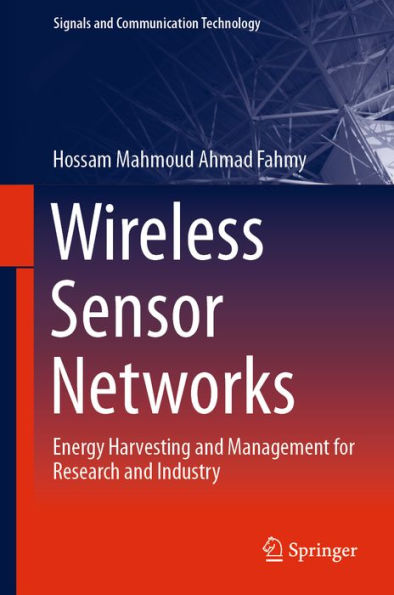This second book by the author on WSNs focuses on the concepts of energy, and energy harvesting and management techniques. Definitions and terminologies are made clear without leaning on the relaxing assumption that they are already known or easily reachable, the reader is not to be diverted from the main course. Neatly drawn figures assist in viewing and imagining the offered topics. To make energy related topics felt and seen, the adopted technologies as well as their manufacturers are presented in details. With such a depth, this book is intended for a wide audience, it is meant to be helper and motivator, for the senior undergraduates, postgraduates, researchers, and practitioners; concepts and energy related applications are laid out, research and practical issues are backed by appropriate literature, and new trends are put under focus. For senior undergraduate students, it familiarizes with conceptual foundations and practical projects implementations. Also, it is intended forgraduate students working on their thesis and in need of specific knowledge on WSNs and the related energy harvesting and management techniques. Moreover, it is targeting researchers and practitioners interested in features and applications of WSNs, and on the available energy harvesting and management projects and testbeds. Exercises at the end of each chapter are not just questions and answers; they are not limited to recapitulate ideas. Their design objective is not bound to be a methodical review of the provided concepts, but rather as a motivator for lot more of searching, finding, and comparing beyond what has been presented in the book.
This second book by the author on WSNs focuses on the concepts of energy, and energy harvesting and management techniques. Definitions and terminologies are made clear without leaning on the relaxing assumption that they are already known or easily reachable, the reader is not to be diverted from the main course. Neatly drawn figures assist in viewing and imagining the offered topics. To make energy related topics felt and seen, the adopted technologies as well as their manufacturers are presented in details. With such a depth, this book is intended for a wide audience, it is meant to be helper and motivator, for the senior undergraduates, postgraduates, researchers, and practitioners; concepts and energy related applications are laid out, research and practical issues are backed by appropriate literature, and new trends are put under focus. For senior undergraduate students, it familiarizes with conceptual foundations and practical projects implementations. Also, it is intended forgraduate students working on their thesis and in need of specific knowledge on WSNs and the related energy harvesting and management techniques. Moreover, it is targeting researchers and practitioners interested in features and applications of WSNs, and on the available energy harvesting and management projects and testbeds. Exercises at the end of each chapter are not just questions and answers; they are not limited to recapitulate ideas. Their design objective is not bound to be a methodical review of the provided concepts, but rather as a motivator for lot more of searching, finding, and comparing beyond what has been presented in the book.

Wireless Sensor Networks: Energy Harvesting and Management for Research and Industry

Wireless Sensor Networks: Energy Harvesting and Management for Research and Industry
eBook (1st ed. 2020)
Related collections and offers

Product Details
| ISBN-13: | 9783030297008 |
|---|---|
| Publisher: | Springer-Verlag New York, LLC |
| Publication date: | 01/25/2020 |
| Series: | Signals and Communication Technology |
| Sold by: | Barnes & Noble |
| Format: | eBook |
| File size: | 65 MB |
| Note: | This product may take a few minutes to download. |
